See the top reasons to attend the conference as highlighted by our faculty

Discover below a selection of faculty who will be sharing their insights and expertise with the delegates. Learn more about them and get ready to be inspired and informed by their sessions.
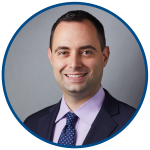
David N. Assis, MD, is a hepatologist who treats patients with liver and digestive diseases at Yale Liver Clinics and Yale New Haven Hospital. He primarily focuses on autoimmune liver diseases (autoimmune hepatitis, primary sclerosing cholangitis, and primary biliary cholangitis) and is co-director of the Yale Autoimmune and Cholestatic Liver Diseases Program. He also has a clinical focus on liver and digestive complications of cystic fibrosis. To provide comfort to his patients, Dr. Assis tells them: “We will always support you and walk closely with you throughout your medical journey, and provide the most cutting-edge discoveries to offer the best possible care.”
Dr. Assis became a hepatologist because he was fascinated by chronic liver diseases, and autoimmune liver diseases, in particular. An assistant professor of medicine (Digestive Diseases) at Yale School of Medicine (YSM), he dedicates his research to investigating the causes, mechanisms of disease, and novel treatments for these complex, rare disorders. In 2014, he was honored with YSM’s Kushlan Junior Faculty Award for his research work.
What can our delegates expect to learn from your presentation The past and the present of PBC and PSC treatment: where are we going? at the event?
Delegates will be presented with a reflection on past failures and successes of therapies for PBC and PSC, the most important mechanisms of action of emerging approaches, and the likely road ahead to success in treatment.
Why should people attend this conference?
This conference will be a unique opportunity to gather and spend two days in a deep dive into the important topic of biliary fibrosis, how we can better understand this ongoing challenge scientifically, and how we can improve the care of patients.
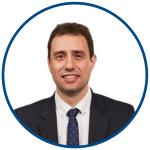
Jesus M Banales is Professor of Molecular Biology and Head of the Liver Diseases Group at the Biodonostia Health Research Institute – Donostia Univ. Hospital in San Sebastian (Spain). Prof. Banales is an international expert on the study of liver pathobiology, from health to disease, with more than 20 years of experience in basic, translational and clinical research. His multidisciplinary group is chiefly focused on studying the molecular mechanisms involved in liver pathobiology, with special attention to cholestatic liver diseases (primary biliary cholangitis (PBC), primary sclerosing cholangitis (PSC), and polycystic liver disease (PLD)), non-alcoholic fatty liver disease (NAFLD), and liver cancer (hepatocellular carcinoma (HCC) and cholangiocarcinoma (CCA)), and looking for novel diagnostic and therapeutic strategies.
He is also Prof. Sciences at the Univ. Navarra (Spain), and Assistant Prof. Medicine/Sciences at the Mayo Clinic (USA) and Univ. Area Andina (Colombia).
Professor Banales is also: Co-founder (2015) and Coordinator (2015-2022) of the European Network for the Study of Cholangiocarcinoma (ENS-CCA);Vice-Chair of the European COST Action EURO-CHOLANGIONET on Cholangiocarcinoma; Coordinator of the “Cancer Task Force” of the International Primary Sclerosing Cholangitis Study Group (IPSCSG); Steering Committee Member of the Global Cholangiocarcinoma Alliance (GCA); Steering Committee Member of the African Hepatopancreatico-biliary Cancer Consortium (AHPBCC); Coordinator of the Ibero-Latin American Research Network on Cholangiocarcinoma (ILARN-CCA); Member of the Governing Board AEEH (Spanish Association for the Study of the Liver); Member of the EASL Educational Committee (European Association for the Study of the Liver); and Member of ERN-Rare Liver Diseases (EU H2020).
Professor Banales is author in >200 research articles published in referent international Journals, has obtained >40 research projects as PI funded by National and International Institutions (including EU Horizon 2020), is inventor of 5 patents (3 licentiated), has supervised 15 doctoral thesis and 9 Master students, and is Member of the Editorial Boardof Hepatology, Nature Reviews Gastroenterology & Hepatology, Liver Transplantation, Seminars in Liver Diseases, Cells, and Special Section Editor of Journal of Hepatology. Finally, he was awarded with different national and international prizes for his significant research career (EASL YI Award 2018; UEG Rising Star 2018; “Ser Navarra Research Award 2020”, among others).
What can our delegates expect to learn from your presentation May the targeting of cholangiocyte signaling be useful in the clinical setting? The case of Polycystic and Fibropolycystic liver diseases at the event?
Polycystic livers are a common issue in clinical practice, and most gastroenterologists encounter several cases. This presentation aims to provide updated and novel insights into the pathogenesis and clinical implications of this condition.
Why should people attend this conference?
Attendees will have the opportunity to gain knowledge on the molecular and therapeutic aspects that are key this disease, and potentially shed light on other liver disorders.
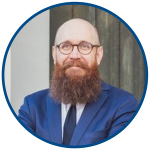
Associate Professor Niklas Björkström is a research group leader at Center for Infectious Medicine, Karolinska Institutet and a physician at Clinical Microbiology, Karolinska University Hospital. Björkström earned his medical and doctoral degrees at Karolinska Institutet. He performed postdoctoral studies at the National Institutes of Health, Bethesda, USA, and have been a principal investigator at Karolinska Institutet since 2014. Björkström has authored >100 articles within the fields of immunology, infection, and cancer. The main focus of his research is to understand the biology of human tissue-resident lymphocytes in health and disease. His research group is specialized in advanced immunological methods for analysis of rare populations of human immune cells.
What can our delegates expect to learn from your presentation Biliary immunobiology in health and biliary disease at the event?
This talk with highlight new insight on the composition of immune cells residing in the biliary niche.
Why should people attend this conference?
This conference uniquely brings together international experts within biliary fibrosis ranging from basic science to translation and will provide a state-of-the-art update on current science as well as main challenges ahead.
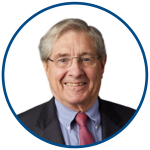 Dr. James L. Boyer is the Ensign Professor of Medicine and Emeritus Director of the Liver Center at Yale University School of Medicine. He is a graduate of Haverford College (1958) and the Johns Hopkins University School of Medicine (1962). From 1982 until 1996 he directed a combined Digestive Disease Section in the Department of Medicine at Yale. He was the founding Director of the NIDDK funded Liver Center at Yale since 1984 and former Director of the NIEHS Center for Membrane Toxicity Studies at the Mt Desert Island Biological Laboratory in Salsbury Cove, ME where he was also Chairman of their Board of Trustees from 1995 to 2003 and 2011-2013. He is also past Chair, Board of Directors of the American Liver Foundation and past member of the Board of Managers of Haverford College and Honorary Board member of the Mt Desert Island Biological Laboratory. Dr. Boyer has a broad interest in all aspects of basic and clinical hepatology. His laboratory has pioneered in understanding the cellular and molecular basis of bile formation and cholestasis and was supported by NIH for more than 40 years including two MERIT awards from NIDDK. He is a member of the AASLD, ASCI, AAP, APS and ACCA and past president of both the American and the International Association for the Study of Liver Disease. He is the recipient of Distinguished Achievement Awards from the AGA, AASLD and American Liver Foundation and the EASL International Recognition Award in 2020.
Dr. James L. Boyer is the Ensign Professor of Medicine and Emeritus Director of the Liver Center at Yale University School of Medicine. He is a graduate of Haverford College (1958) and the Johns Hopkins University School of Medicine (1962). From 1982 until 1996 he directed a combined Digestive Disease Section in the Department of Medicine at Yale. He was the founding Director of the NIDDK funded Liver Center at Yale since 1984 and former Director of the NIEHS Center for Membrane Toxicity Studies at the Mt Desert Island Biological Laboratory in Salsbury Cove, ME where he was also Chairman of their Board of Trustees from 1995 to 2003 and 2011-2013. He is also past Chair, Board of Directors of the American Liver Foundation and past member of the Board of Managers of Haverford College and Honorary Board member of the Mt Desert Island Biological Laboratory. Dr. Boyer has a broad interest in all aspects of basic and clinical hepatology. His laboratory has pioneered in understanding the cellular and molecular basis of bile formation and cholestasis and was supported by NIH for more than 40 years including two MERIT awards from NIDDK. He is a member of the AASLD, ASCI, AAP, APS and ACCA and past president of both the American and the International Association for the Study of Liver Disease. He is the recipient of Distinguished Achievement Awards from the AGA, AASLD and American Liver Foundation and the EASL International Recognition Award in 2020.
What can our delegates expect to learn from your presentation A brief history of bile secretion and cholestatis at the event?
Delegates will learn about the key scientific milestones that have led to our current understanding of the mechanisms of bile formation and the adaptations in these processes and their treatment that occur during cholestasis.
Why should people attend this conference?
This state of the art conference brings international experts to present the latest information on the pathophysiology and treatment of fibrotic liver disorders.
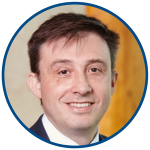
With a Medical degree at Padua University, Italy (1987), Luca Fabris got his PhD at University of Milan, Italy (1997), after a research program developed at University of Birmingham, UK (1995-96). In 2005, he was nominated assistant Professor at the University of Padua, School of Medicine. Currently, as associate Professor in Gastroenterology, he leads a laboratory of experimental Hepatology in the Department of Molecular Medicine, in the same University. Over the last 20 years, he has focused his scientific interests on topics related to pathophysiology of cholangiopathies, both of inflammatory and neoplastic origin, mainly with liver cell biology studies. From 2012, he has an appointment as adjunct Professor in the Yale University, CT, USA, where he is involved in the program of genetic biliary diseases and cancers. On the clinical side, he has developed a longstanding experience, mostly devoted to the clinical management of rare liver diseases, in particular primary cholangiopathies. From 2012 to 2016, Dr Fabris was a steering committee member of the International Primary Sclerosing Cholangitis (PSC) Study Group, and from 2016, chair of the working group of ‘Malignancies in PSC’. From 2016 to 2019, Dr Fabris is a steering committee member of the AASLD Special Interest Group on Cholestasis and Biliary Diseases.
What can our delegates expect to learn from your presentation Morphogenetic signaling in biliary repair and fibrosis at the event?
Recent lines of evidence indicate that macrophages rather than the more conventional cell effectors of liver fibrosis, i.e. hepatic stellate cells and portal fibroblasts, are actively involved in the earliest stages of biliary fibrogenesis, by exchanging a multitude of cues with cholangiocytes, which promote their recruitment from the circulating compartment owing to a senescent or an immature epithelial phenotype.
Why should people attend this conference?
Biliary fibrosis coupled with cholestasis is a hallmark of primary cholangiopathies. Whereas cholestasis related to the impaired ability of the biliary epithelium to alkalinize or fluidify the primary bile produced by the hepatocytes, is a common manifestation observed in most of them, biliary fibrosis variably occurs. When present, biliary fibrosis is however, a major determinant of disease progression, as it is responsible for the most feared complications of the disease, including not only portal hypertension and biliary cirrhosis, but also cholangiocarcinoma.

Dr. Romina Fiorotto, PhD is an Assistant Professor of Medicine, Section of Digestive Diseases, Internal Medicine Department at the Yale School of Medicine. She earned her undergraduate degree in Biological Sciences at the University of Padova and her Ph.D at the University of Parma, Italy. She next moved to US to complete her post-doctoral training at the Yale School of Medicine, Section of Digestive Diseases. She was the recipient of a Liver Scholar Award from the American Liver Foundation. She is a basic research scientist with an interest in biliary biology and pathobiology. Her research career has focused on the basic pathophysiological mechanisms of diseases of the biliary tree, such as Cystic Fibrosis related cholangiopathy, Alagille Syndrome, Polycystic Liver Diseases and PSC. Also, she has a special interest in generating human experimental models (such as iPSC and organoids) to translate basic molecular findings into potential therapeutic approaches for liver disease. During the past several years, she has focused on the Cystic Fibrosis related liver disease (CFLD). Her studies uncovered the role of Toll-like receptors and epithelial innate immunity in the pathogenesis of CFLD. Currently she is exploring the complex interplay between genetic susceptibility of the biliary epithelium and the causal role of the gut microbiota in the development and progression of CFLD. She serves as a member of the AASLD Foundation Award Committee and as Steering Committee Member of the Cholestatic & Autoimmune Liver Diseases SIG.
What can our delegates expect to learn from your presentation Innate immunity and the gut liver axis in cholangiopathies: The case for cystic fibrosis related liver disease at the event?
The gut-liver axis is implicated in the pathogenesis of many biliary diseases including cystic fibrosis liver disease. This presentation will discuss the pathogenetic mechanisms at play between the gut and the liver in cystic fibrosis leading to biliary disease.
Why should people attend this conference?
Attending this conference will give you the opportunity to learn from leaders in the field about the latest advances in research and cutting-edge technologies to study biliary fibrosis. It will also be a great opportunity for trainees to gain experience in the field and connect with peers.
 Gregory J. Gores, M.D. is a senior physician scientist. His research contributions include sustained federal funding over three decades (over 80 projects and 21 million in funding), over 750 publications, an H-index of 149, and over 74,100 citations (Scopus data base). His clinical focus on hepatobiliary neoplasia has led to novel protocols regarding liver transplantation for cholangiocarcinoma. Educational activities include mentoring over 81 fellows, and directing a liver transplant fellowship program. These activities have been recognized by receipt of an American Gastroenterological Association Mentorship Award. Extramural leadership positions include past presidency of the American Association for the Study of Liver Disease (AASLD) and the International Liver Cancer Association, and a past Councilor of the American Gastroenterological Association (AGA). His stature and accomplishments were recently recognized by prestigious awards from the Mayo Alumni Association, the AASLD, the German Society of Gastroenterology, and the Canadian Liver Foundation and Canadian Association for the Study of Liver. He was recently appointed as Editor in Chief for Hepatology (term 2022-2026).
Gregory J. Gores, M.D. is a senior physician scientist. His research contributions include sustained federal funding over three decades (over 80 projects and 21 million in funding), over 750 publications, an H-index of 149, and over 74,100 citations (Scopus data base). His clinical focus on hepatobiliary neoplasia has led to novel protocols regarding liver transplantation for cholangiocarcinoma. Educational activities include mentoring over 81 fellows, and directing a liver transplant fellowship program. These activities have been recognized by receipt of an American Gastroenterological Association Mentorship Award. Extramural leadership positions include past presidency of the American Association for the Study of Liver Disease (AASLD) and the International Liver Cancer Association, and a past Councilor of the American Gastroenterological Association (AGA). His stature and accomplishments were recently recognized by prestigious awards from the Mayo Alumni Association, the AASLD, the German Society of Gastroenterology, and the Canadian Liver Foundation and Canadian Association for the Study of Liver. He was recently appointed as Editor in Chief for Hepatology (term 2022-2026).
What can our delegates expect to learn from your presentation Targeting ductular reactive cells as an anti-fibrotic strategy in biliary fibrosis at the event?
This talk will highlight mechanisms governing regulation of the pro-fibrogenic ductular reactive cell population in cholestatic liver disease.
Why should people attend this conference?
We are now in an era of identifying the cellular networks contributing to disease pathogenesis; this conference will provide new mechanistic insight into those cellular networks causing biliary fibrosis.

Dr Vikas Gupta is a physician-scientist interested in using basic science to understand the fundamental nature of disease and to translate these discoveries to patients. He received his MD and PhD from the Duke University School of Medicine where he studied organ regeneration in zebrafish. He completed an Internal Medicine Residency at the Massachusetts General Hospital and went to Weill Cornell Medical College for a Gastroenterology and Hepatology Fellowship. As a fellow, he used genetic mouse models to study lineage relationships between different liver mesenchymal cells and became interested in diseases of the biliary tree. The research goal of his lab is to comprehend the fundamental changes that lead to fibrosing and inflammatory disorders of the biliary tree.
Dr. Gupta is a practicing hepatologist who sees and treats patients with any liver disorder.
What can our delegates expect to learn from your presentation Role of Cholangiocyte derived Wnts during cholestatic injury at the event?
The large bile ducts are a major source of disease in cholestatic liver disease. Here, delegates can learn about how basic signalling pathways converge to drive myofibroblast differentiation in mesenchymal cells around the major ducts.
Why should people attend this conference?
Biliary fibrosis is an under appreciated cause of end stage liver disease. Understanding basic mechanisms of biliary fibrosis can help advance treatments from those afflicted by it.

Neil Henderson undertook medical training in Edinburgh and London before completing a Wellcome Trust funded PhD at the MRC Centre for Inflammation Research, Edinburgh. He then trained in hepatology and was awarded a Wellcome Trust Intermediate Fellowship, during which time he spent a 3 year post-doctoral period based at the University of California, San Francisco, USA. Neil was then awarded a Wellcome Trust Senior Research Fellowship in Clinical Science to investigate mechanisms of organ fibrosis and regeneration, using cutting-edge approaches including the rapidly evolving field of single cell genomics.
What can our delegates expect to learn from your presentation Use of Single cell transcriptomics to dissect the mesenchymal cell niche at the event?
I will discuss how the liver field is harnessing single cell genomics approaches to increase our understanding of the cellular and molecular mechanisms regulating human liver fibrosis.
Why should people attend this conference?
As well as updating people on the cutting-edge scientific approaches currently being utilised to understand the mechanisms of human biliary fibrosis, this meeting will also discuss how we use this rich, new information to guide the design of relevant and potent novel therapies for biliary fibrosis.

Tom Hemming Karlsen (MD, PhD) is a clinical specialist in internal medicine and gastroenterology working in Oslo, Norway. Dr. Karlsen graduated from medical school at the University of Bergen in 1997. In 2012 he was appointed professor of gastroenterology at the University of Bergen and in 2014 he was appointed full professor of internal medicine at the University of Oslo. Within the Oslo University Hospital he is Research Head of the Division of Surgery, Inflammatory medicine and Transplantation, and is also leader of the Norwegian PSC research center at the Department of Transplantation Medicine and Research Institute of Internal Medicine. Clinically, he works as a senior consultant within transplant hepatology at the Section of Gastroenterology at the Department of Transplantation Medicine. Dr. Karlsen's research portfolio ranges from genetic epidemiology and applications of genomic technologies (e.g. dissecting the immunogenetic susceptibility to immune‐mediated gut and liver diseases), via translational research (e.g. biomarker studies) to clinical studies (e.g. liver transplantation). He is co-founder and former secretary (2010-2017) of the International PSC study group and has served as the coordinator of the Nordic Liver Transplant Registry from 2006-2014. He served as Secretary General of the European Association for the Study of the Liver (EASL) from 2017-2019, responsible for reorganizing several aspects of the organization governance. Prof. Karlsen has served as co-chair for the EASL-Lancet Commission on Liver disease in Europe.
What can our delegates expect to learn from your State of the art lecture on Gut-liver interactions in biliary diseases at the event?
The biliary system holds a crucial role in the gut-liver axis, both in terms of providing a “liver-gut axis” via bile constituents, and with the proximity of bile ducts to portal blood in the portal tracts. The lecture will summarize current knowledge on the gut microbiome in liver diseases with an emphasis on pathogenic concepts relevant for the development of biliary diseases.
Why should people attend this conference?
Despite more than 10% of liver transplants in Europe are performed on the basis of biliary diseases, research in bile duct diseases and biliary fibrosis have been underrepresented in literature and at scientific conferences. This dedicated conference provides a long awaited emphasis on data and tools relevant to research into biliary function and associated pathophysiology.

Frederic Lemaigre studied Medicine at the Université Catholique de Louvain(UCLouvain, Belgium) and graduated in 1986. He then started a career in research under supervision of Prof. Guy Rousseau, at the de Duve Institute, a Brussels-based research institution closely associated with the UCLouvain. The initial focus of the research was on hormonal and tissue-specific regulation of gene transcription. After a stay (1991-1992) in the group of Prof. Michael Green at the University of Massachusetts Medical School (Worcester, MA., USA), to work on structure-function relationships in transcription factors, Frederic Lemaigre returned to the Duve Institute, to investigate how gene regulatory networks control cell differentiation. Focusing on liver and pancreas, Frederic Lemaigre discovered a new class of transcription factors (Onecut factors: HNF6, OC2, OC3) and identified signaling pathways essential for differentiation and morphogenesis of the two organs. Frederic Lemaigre's team is now investigating how gene regulatory networks determine normal development of liver and pancreatic cells in the embryo, and how deregulation of such networks in adults perturbs cell differentiation and initiates tumorigenesis. Frederic Lemaigre currently leads a group at the de Duve Institute. He is also Professor of molecular biology at the Faculty of Medicine of the UCL.
What can our delegates expect to learn from your presentation Biliary development at the event?
How biliary cells differentiate from liver progenitor cells has been investigated in detail, but how the biliary cells then organize to form ducts is less well known. Using the latest technologies for three-dimensional imaging, I will illustrate how bile ducts develop in 3D. I will also describe new molecular mechanisms driving interactions between bile ducts and adjacent blood vessels during development.
Why should people attend this conference?
Understanding diseases of the bile ducts, in adults or in foetuses, does require significant knowledge on normal physiological processes. Developing therapies such as regenerative therapies cannot be dissociated from a thorough understanding of normal development. Therefore, attending a conference providing basic knowledge on bile duct development should provide new food for thought about pathophysiology of biliary diseases.

My research delves into immune mechanisms driving liver inflammation and fibrosis in children with biliary atresia or autoimmune liver disease. My colleagues and I are also looking into the genetic causes of acute and chronic liver diseases and circulating and imaging biomarkers for liver inflammation or fibrosis so we can avoid an invasive procedure to monitor the disease.
Our research includes:
- The signaling molecules regulating liver inflammation and fibrosis in fibrosing cholangiopathies, which can be targeted with innovative treatments
- Novel immune therapies based on what genes predispose patients to pediatric liver disease
- Ways to detect and determine the various types of circulating and imaging biomarkers from liver injury and fibrosis in order to use them as surrogate endpoints in clinical trials for primary sclerosing cholangitis (PSC) and autoimmune hepatitis
We have many translational studies at Cincinnati Children’s and are developing an infrastructure for a multi-center learning network to promote research and improve care for children with autoimmune liver disease across North America.
I started to pursue this area of research during my pediatric residency when I encountered infants with chronic liver disease from biliary atresia awaiting liver transplantation. The absence of medical therapies as an alternative to liver transplantation made me determined to discover new treatments. I’m grateful for my first research opportunities in Dr. Jorge Bezerra's laboratory during my residency and fellowship at Cincinnati Children’s, which helped me to develop independent research programs to find novel therapies for biliary atresia and autoimmune liver diseases.
What can our delegates expect to learn from your presentation Biliary atresia: Update on pathogenesis at the event?
Liver fibrosis in infants with biliary atresia rapidly progresses to end stage liver disease within a few months unless bile flow is surgically restored. We will review recent insights into genetic drivers and immunologic mechanisms of this extreme phenotype of biliary fibrosis.
Why should people attend this conference?
We will discuss which lessons from observational studies and clinical trials in children with biliary atresia may help us to design more effective therapies for cholangiopathies in all age groups.

